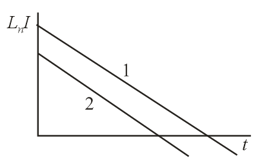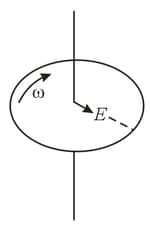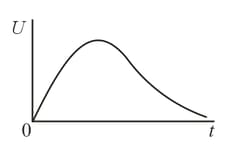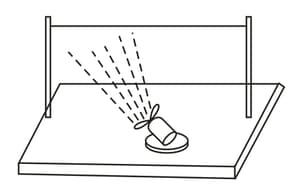A charged capacitor is discharged through a resistor two times. The time dependence of the logarithm of the discharge current obtained in the two experiments is represented by the two straight lines, and , in the figure accompanying the problem. The experimental conditions differed only in one of the three parameters: the initial voltage of the capacitor , the capacitance , or the resistance . Determine the parameter that was varied in these experiments and in which case this parameter is greater.



Important Questions on Direct Current
A conducting disk is rotating with an angular velocity . Allowing for the fact that electrons are the current carriers in a conductor, determine the potential difference between the centre of the disk and the edge.

In the Tolman-Stewart experiment, a cylinder is mounted on a shaft and is rotated very rapidly. The surface of the cylinder is wound with many turns of wire of length in a single layer. After the cylinder has been set spinning at a large angular velocity, it is braked to a stop as quickly as possible. In the circuit consisting of the wire and a measuring device, this braking manifests itself in a pulse of current caused by the potential difference that appears between the ends of the wire. If the potential difference is registered by an oscillograph, we obtain a curve similar to the one shown in the figure accompanying the problem, where time is laid off on the horizontal axis. How, knowing the initial linear velocity of the winding, the length of the wire, and the voltage oscillogram, can one determine the electron charge-to-mass ratio?

The section of a conductor between the points and is being heated. Does this lead to a redistribution of potential along the conductor (the arrow indicates the direction in which the current is flowing)? Will the passage of current change the temperature distribution in the conductor?

A constant voltage is applied to a metal wire. The current passing through the wire heats the wire to a certain temperature. Then half of the wire is cooled by a stream of air from a fan. How will the temperature of the other half of the wire change in the process?

